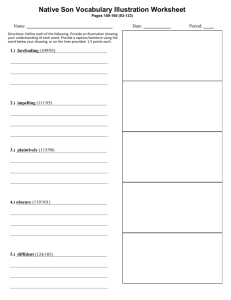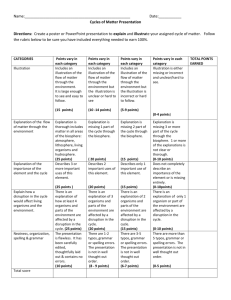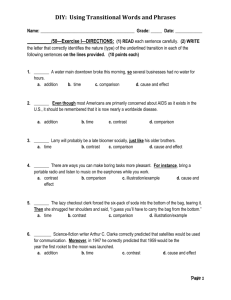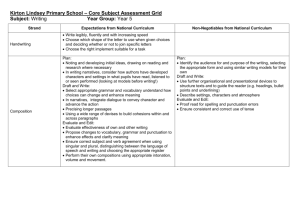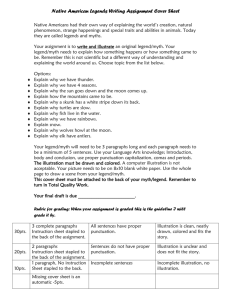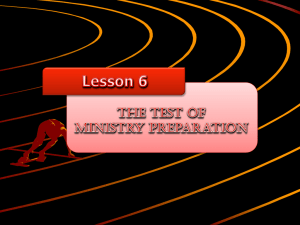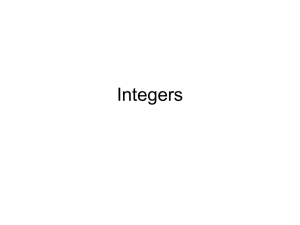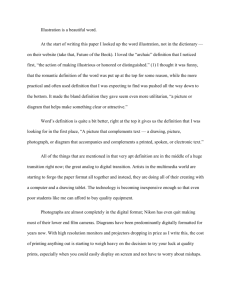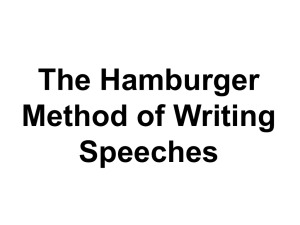Modeling Addition – Visual Word Problems For each example below
advertisement
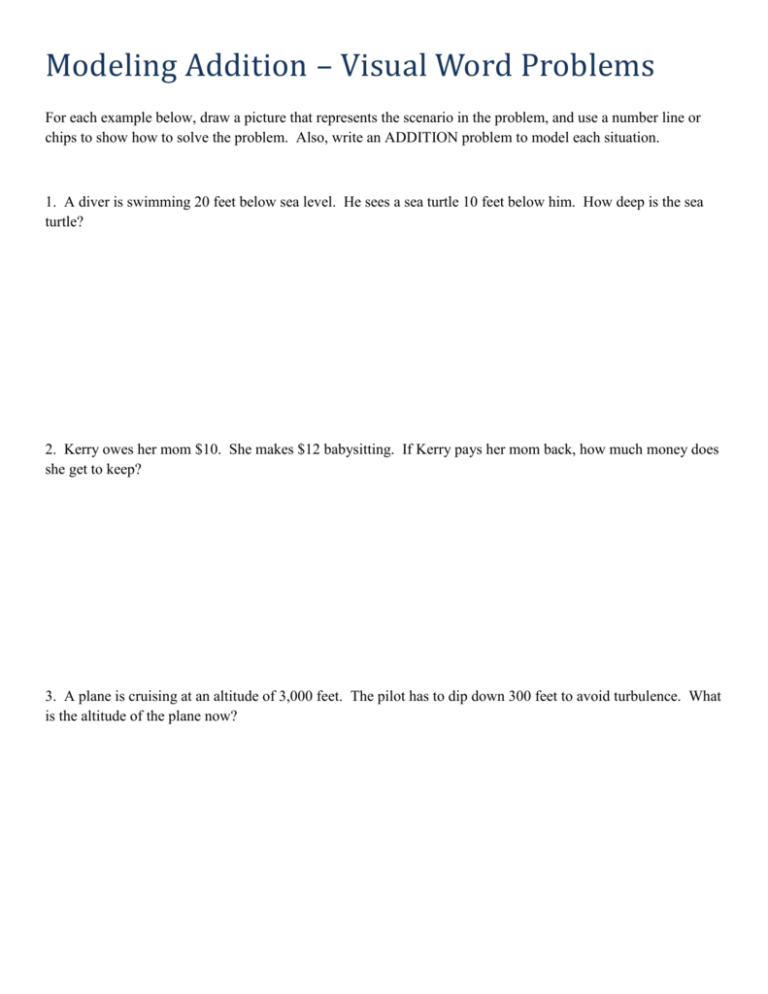
Modeling Addition – Visual Word Problems For each example below, draw a picture that represents the scenario in the problem, and use a number line or chips to show how to solve the problem. Also, write an ADDITION problem to model each situation. 1. A diver is swimming 20 feet below sea level. He sees a sea turtle 10 feet below him. How deep is the sea turtle? 2. Kerry owes her mom $10. She makes $12 babysitting. If Kerry pays her mom back, how much money does she get to keep? 3. A plane is cruising at an altitude of 3,000 feet. The pilot has to dip down 300 feet to avoid turbulence. What is the altitude of the plane now? Modeling Addition – Visual Word Problems Directions: You will write an original word problem representing a real world example involving the addition of two integers (at least one must be negative), and draw an illustration that will make your problem come to life for the reader. Your illustration must include a number line OR a variation of the chip model that explains how to get the solution to the problem. This will count as a test grade, and is due by homeroom on Friday, October 24. Because you will have two class periods to work on this, late projects will lose 10 points PER WEEK LATE, even if they are perfect. 0 1 2 The problem does not make sense or would not happen in the real world. OR The problem cannot be solved by adding integers. No illustration is drawn. The problem makes sense, and is a scenario that is encountered in the real world. The problem can be solved using addition of two integers, however, both are positive. The problem includes an illustration, but it does not directly relate to the problem. Modeling Integer Addition (x 10) The student does not model how to solve the problem using the chips or a number line. The student includes a number or variation of the chips, but does not model how to arrive at a solution to the problem, OR does not include the equation. Grammar (x 5) Major errors in grammar, punctuation, or spelling exist. The problem contains minor errors in grammar, punctuation or spelling. These errors do not affect one’s ability to understand the problem. Final product contains minor tears, smudges or erasures. OR Words and pictures are not outlined in a dark marker or pen. The problem makes sense, and is a scenario that is encountered in the real world. The problem can be solved using addition of two integers, one of which is negative. The illustration makes the problem come to life for the reader. Illustration is clearly aligned with the problem. The student uses a number line or variation of the chips to model how to solve the problem. The model shows how to arrive at a solution to the problem. The equation is included. The problem is perfect in terms of grammar and punctuation. All words are spelled correctly. Problem (x 10) Illustration (x 5) Presentation (x 5) Final product is a disaster and must be resubmitted. Final product is neat. No rips, tears, smudges, or erasures exist. Words and pictures are outlined in a dark marker or pen. Final Grade: Your Points
